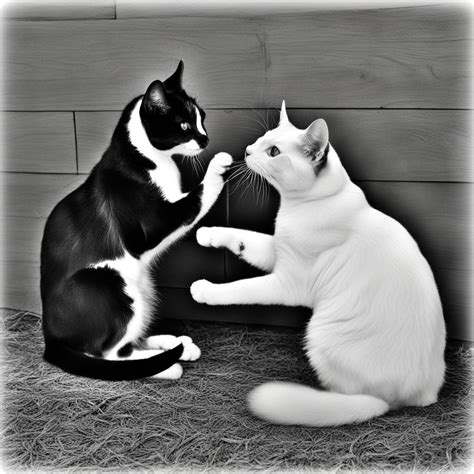Introduction
Cats are often seen as solitary creatures, but they can also be highly social animals. In fact, cats live in groups called colonies, and they have a complex social hierarchy. Within a colony, there is typically one dominant cat who rules the roost. This cat gets first dibs on food, water, and sleeping spots, and it may also bully other cats in the colony.

Dominance is a normal part of cat behavior, but it can become a problem if it leads to aggression. Aggressive cats may attack other cats, people, or even objects. This can be a serious issue, as cat aggression can result in injuries, property damage, and even death.
What Causes Cat Aggression?
There are many factors that can contribute to cat aggression. Some of the most common causes include:
- Pain or illness: If a cat is in pain or discomfort, it may become aggressive as a way of protecting itself.
- Fear: Cats are natural prey animals, so they may become aggressive if they feel threatened. This can happen if a cat is introduced to a new environment, if it is approached by a stranger, or if it is attacked by another animal.
- Frustration: Cats can become aggressive if they are frustrated by something, such as not being able to get to their favorite food or toy.
- Play: Sometimes, cats may engage in aggressive behavior as a form of play. This is usually harmless, but it can become a problem if the cat does not know how to control its aggression.
How to Handle Cat Aggression
If your cat is displaying aggressive behavior, it is important to take steps to address the problem. The first step is to identify the cause of the aggression. Once you know what is triggering your cat’s aggression, you can start to take steps to address the issue.
Here are some tips for handling cat aggression:
- Remove the source of the aggression: If your cat is aggressive towards other animals, try to keep them separated. If your cat is aggressive towards people, try to avoid approaching them.
- Provide your cat with a safe place to retreat: Cats need a place where they can feel safe and secure. This could be a cat tree, a bed, or even a cardboard box.
- Play with your cat regularly: Play is a great way to help your cat burn off energy and reduce frustration. Choose toys that are interactive and that your cat enjoys playing with.
- Train your cat: Training can help your cat learn how to control its aggression. There are a number of different training techniques that you can use, so find one that works for you and your cat.
Cat Aggression and Dominance in 2025
The way we think about cat aggression and dominance is changing. In the past, it was common to think of aggression as a sign of dominance. However, research has shown that this is not always the case. In fact, some studies have shown that aggression can actually be a sign of submission.
This new understanding of cat aggression has led to a change in the way we approach treatment. In the past, we would often try to suppress aggression by punishing the cat. However, we now know that this approach is not only ineffective, but it can also make the problem worse.
Today, we focus on treating the underlying cause of the aggression. This may involve addressing pain or illness, providing a safe environment, or teaching the cat how to control its aggression.
Conclusion
Cat aggression is a complex issue, but it is one that can be managed. By understanding the causes of aggression and using the right treatment approach, you can help your cat live a happy and healthy life.
FAQs
- What are the signs of cat aggression?
The signs of cat aggression can vary depending on the cause of the aggression. Some of the most common signs include:
- Hissing
- Growling
- Biting
- Scratching
- Tail flicking
- Ears pinned back
-
Dilated pupils
-
What should I do if my cat is aggressive?
If your cat is aggressive, it is important to take steps to address the problem. The first step is to identify the cause of the aggression. Once you know what is triggering your cat’s aggression, you can start to take steps to address the issue.
- How can I prevent cat aggression?
There are a number of things you can do to prevent cat aggression, including:
- Socializing your cat from an early age
- Providing your cat with a safe and enriching environment
- Playing with your cat regularly
-
Training your cat
-
Is cat aggression a sign of dominance?
Not always. Aggression can be a sign of dominance, but it can also be a sign of fear, pain, or illness.





















